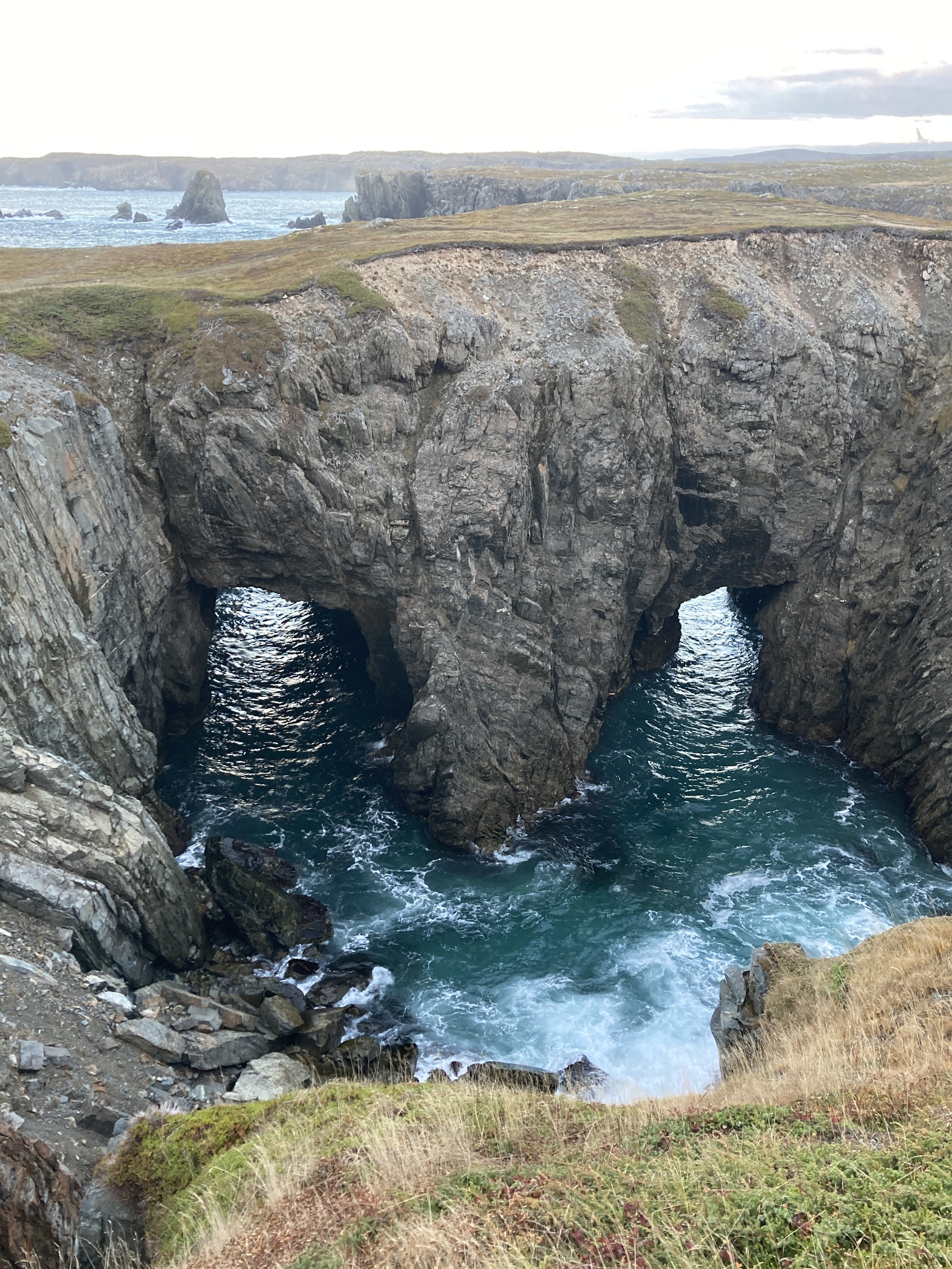Trekking One Corner of the Flat Earth
Dispatch X
Traveling to Bonavista, Newfoundland
According to the Flat Earth Society, one corner of the world sits near the town of Bonavista, Newfoundland (just south of Fogo Island in the North Atlantic Ocean). I mention this because Bonavista was next on our itinerary, and that’s how the subject of flat earths came up. It was Tom, my Vermont friend, who first made the connection.
A Picture of the Earth as a Disk - Photo Courtesy of The Flat Earth Society
You’d think the idea of a flattened world was some kind of elaborate joke, but the folks who run the Society are dead serious. They have an online forum and store and a word-laden collection of Flat Earth literature designed to prove to anyone worth listening that Earth is as compressed as a crepe and does not revolve around the sun because, as any dope knows, the earth sits beneath a kind of dome — the firmament — and it’s all right on there on their website, and you’d be stunned at exactly how robust the whole argument against a spherical planet is. According to an article I found in the Toronto Star, the Canadian branch of the Society believes Fogo Island — “especially the rocky outcrop of Brimstone Head that you can climb for a spectacular view of the North Atlantic Ocean, is one of the four corners of the Earth.”
It’s not entirely clear why a spot near this particular sector of earth might be considered the edge of the world, until you get to Bonavista. Because once there, it does feel as though you are teetering on the knife of nothing.
But we would know none of that until we first made our way from St. Anthony’s, and crossed 600 miles to the second most eastern village in all of North America.
The trip took two days. At the halfway point we stopped in the small town of Springdale where we found an excellent Chinese restaurant (how does THAT happen) called Maria’s surrounded by mountains of pine trees. Proof that culinary surprises can abound in the most unexpected places.
We awoke the next morning to exactly the opposite view we faced the day before: fog, thick as pudding. We spent the next four hours driving (gingerly) through clouds of mist, and began to worry that Bonavista would instead be NoSuchavista. But eventually the fog lifted to magically reveal a battalion of bright gold and orange birch trees lining the TransCanadian Highway like stately sentinels.
The Stately Birch Trees of Newfoundland (Photo by Chip Walter)
I would have thought by this time we’d be up to our teeth in bitter cold this far north, making every deciduous tree skeletal and denuded. But I had forgotten the Gulf Stream can keep even a land at 48 degrees of latitude warmish. Endless acres thick with flaming birch and deep green pine covered the ground as far as we could see. Newfoundland’s forests were doing everything in their power to buffer the planet from the ravages of climate change.
It seemed to me that we were so far afield, so bereft of other humans that I wondered why anyone had built the highway we were traveling in the first place. If not for the occasional Tim Horton’s, and the asphalt highway, I could almost imagine a party of Mi'kmaq natives emerging from the mists. But none did. We forged on, splitting from the main highway to head north again to the sea where we soon found our B&B.
When an Italian Explorer (in the employ of King Henry VII of England) by the name of Giovanni Caboto (John Cabot, if you’re recalling your grade school history) first set foot on this bay in 1497, he supposedly sang out, “O buono vista!” — “Oh, happy sight!” Thus the name. I’m sure he was simply thrilled to stand on solid ground after sailing the rough seas of the North Atlantic for months before finally making landfall. It is a wild and beautiful place.
Giustino Menescardi - John Cabot in traditional Venetian garb by Giustino Menescardi (1762). A mural painting in the 'Sala dello Scudo' in the Palazzo Ducale. Taken from a reproduction in "History of Maritime maps", Donald Wigal
But first, after we had to haul our bags into the B & B, I was determined to have coffee. It wasn’t frigid outside exactly, but the air was chill and damp, and a hot brew felt right. I spotted a contraption that seemed to resemble something that might make coffee, but the thing confounded me. Now I generally get by on a day-to-day basis, but confusion and I are often bonded, and this machine had me. It required heating the water somehow so that the coffee inside could be brewed and then pressed, but how to get the water heated and somehow into the coffee before you managed this was entirely beyond my ken. I harrumphed and swore at my attempts until Cyndy helped me solve the mystery by Googling the name of the machine. There, YouTube explained the thing, a little like other DIY videos explain how to attach a deck to your house, or erect a solar home.
Any time I am in the company of my wife, I often become an idiot. This was becoming increasingly evident as we travelled. Cyndy wasn’t the culprit, it’s all me. She is just so good at doing so much better at so much that when I am with her, I check out, knowing (subconsciously I suppose) that she has everything under control. I suddenly find it impossible to locate hair dryers in the rooms where we stay, leave keys or money or COVID masks behind, pass up exits on highways. When, for these reasons, she reminds me that we should turn at the next exit, I get ruffled. “I know,” I say, knowing nothing of the kind.
Naturally, I feel I never make these mistakes when I’m alone, but the truth is I probably make them all the time, but choose to forget about them (and thus repeat the same mistakes). In general, I wander, she’s focused. She is specific, I am general. I live in my mind and she lives in the real world. She pays attention to detail while I look at everything and miss the details meant to get us from point A to points B, C and D. Having now travelled thousands of miles for months, we have generally come to an understanding about this, and together accept my idiocy.
After coffee and organizing our gear and checking email, we headed off to explore before night descended. (At this latitude, it was now dark by 4 pm.) The town was empty and crossed with alleys that ran Willy-nilly, like spaghetti. There were tiny houses and small warehouses, many churches, a bodega, and, because the tourist season had passed, only two open restaurants, one bodega and an occasional human. Beyond all of this lay the sea, wild and grey as graphite. But we would explore that tomorrow.
(Photo by Chip Walter)
According to the experts that track these things, there are lots of animals that prowl the land around Bonavista. American black bear, moose, red and arctic foxes, caribou, snowshoe hares, red squirrels, lynxes, river otters and beavers. In the waters nearby are harbor seals, humpback, grey and pilot whales, orcas, white-sided dolphins, and porpoises, never mind the grand flocks of myriad birds throughout. Yes, lots of animals, but not many humans, particularly as the month of November neared.
The town was once one of Newfoundland’s more bustling harbors, but according to Eric, a local expert on the town’s history who we found at the one local bar that was open, times got tough through the 20th century until, over the past decade, outsiders like us began to join a growing tourist trade. But again, it was now November, and COVID had battered the pocketbooks of many restaurants. The tourists were long gone leaving no one but a handful of Bonavistites to keep us company.
Masks Will Be Worn! (Photo by Chip Walter)
That was fine with us. It kept things simple. With help from a woman on the street we found PK’s, the town's one open restaurant. COVID rules were strict and run by an iron-fisted woman at the cash register inside. Every person needed to be noted by name and phone in a small book she kept handy after they showed proof of vaccination. It didn’t matter if she had grown up with them or you came from Madagascar, all information was meticulously scribbled down. I noticed that when locals (which was to say everyone but us) gave their phone number, only the last four digits were necessary -- that's how small the village was.
“Phone?” She would ask.
“4759.”
She’d stand steady in her tiny, fierce stance, and duly note the facts.
When we stepped up to the counter (feeling a little like Seinfeld facing the Soup Nazi) she took the foreigners pretty much in stride, though her brow knotted in suspicion until she had properly noted our names and numbers and our digital proofs of vaccination. We were then escorted to the high-ceilinged dining room. It was about the size of your average living room, festooned with faded pictures of breaching blue whales and icebergs and paintings by locals artists of the town and coast … the very things we were hoping to explore more properly the next day.
I have always loved language - the overtones and prosody, idioms, accents and rhythms, the turn of phrase of local language. In so many places throughout the United States our language has been homogenized by TV and the Internet. As far back as the 1960s John Steinbeck wrote about his travels around the United States, “It seemed to me that regional speech is in the process of disappearing, not gone but going. … Communications must destroy localness, by a slow, inevitable process. … Just as our bread, mixed and baked, packaged and sold without benefit of accident or human frailty, is uniformly good and uniformly tasteless, so will our speech become one speech.” (From Travels with Charley in Search of America.)
But in Newfoundland (pronounced with the accent on LAND), at least to my American ear, the English language was an engaging outlier, and the Celtic lilt was more pronounced than in any other part of the island. Over at St. Anthony’s, near the Viking Settlement, the truckers who ate at the Tim Horton’s spoke with hard, almost vicious Rs, and words were delivered with the speed of a Gatling gun. There was no lilt there. But in Bonavista, Rs, and a good many other consonants, disappeared in some places and grew more pronounced in others. “Theahs’ goo-food, down the rood theah.” Translation: “There’s good food down the road there.” “Ouw right, my darlin, what are ya needin?” “All, right, my darlin’. What can I get you.” One evening I asked a woman where I might be able to get in a good nighttime walk. “Oh, yes, yes - right along the whahtehr. Go doon the low road and keep walking', walking' and you'll find the end, and even if you don't get there, it's a fine walk all the same."
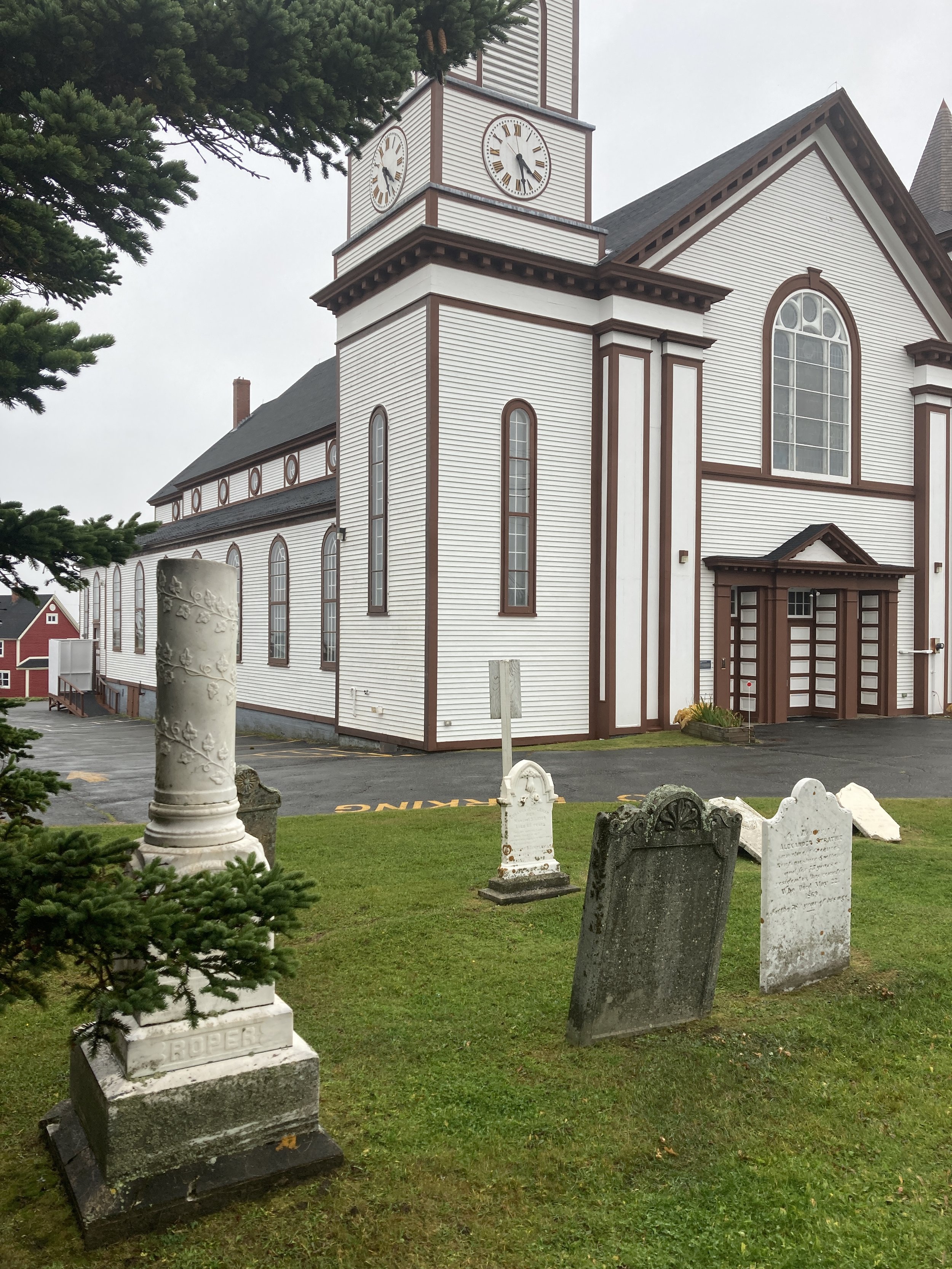
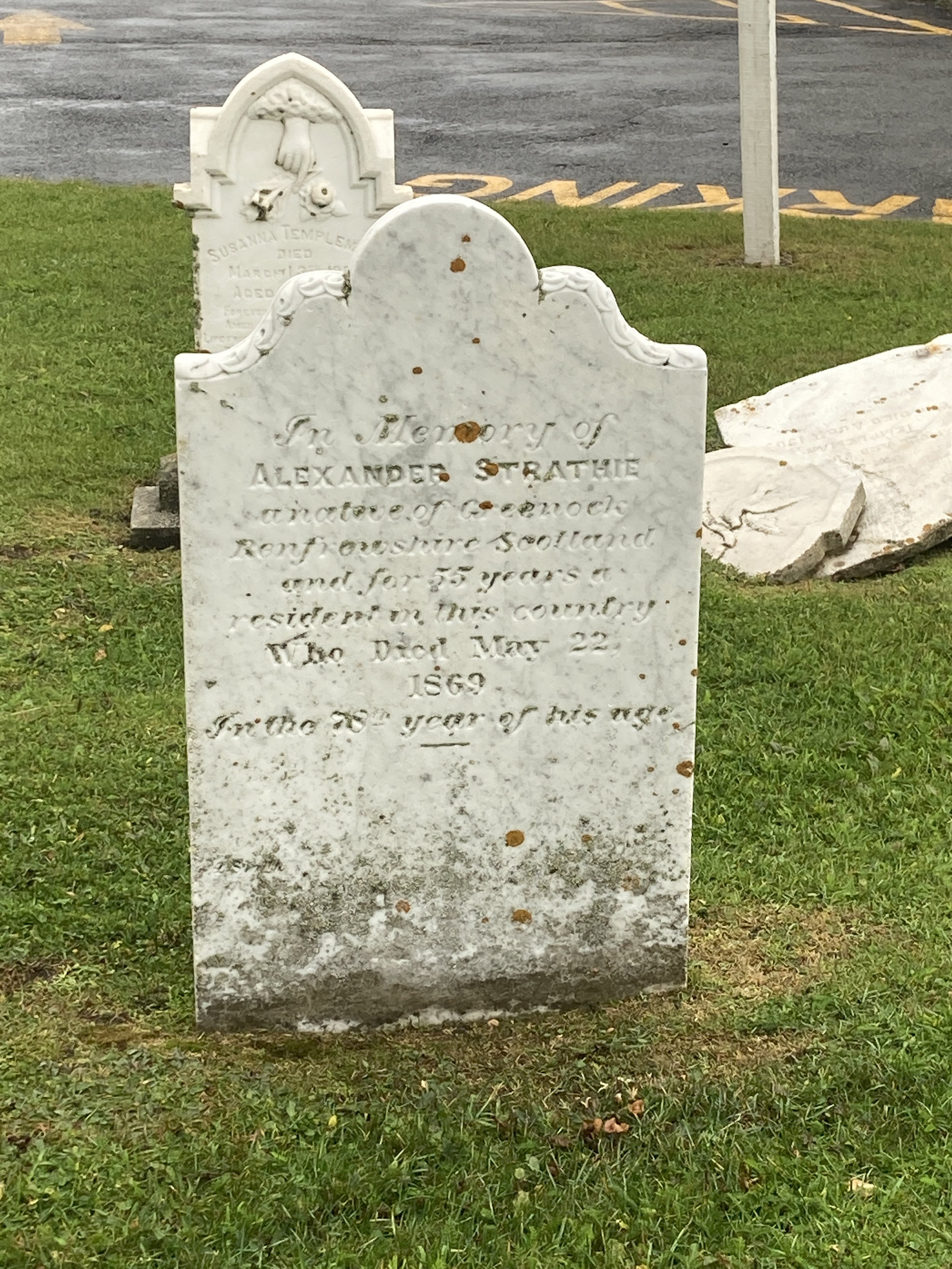

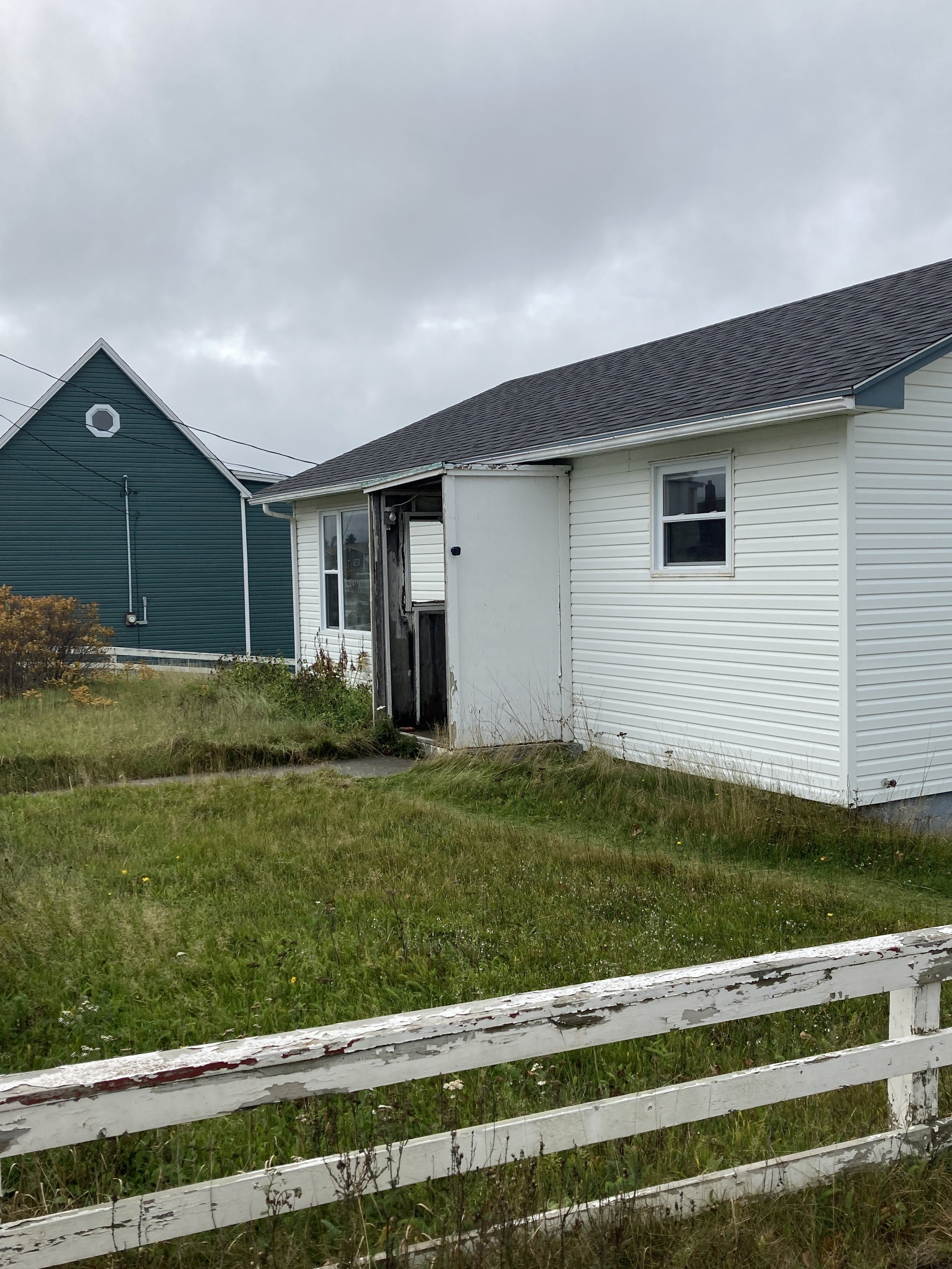
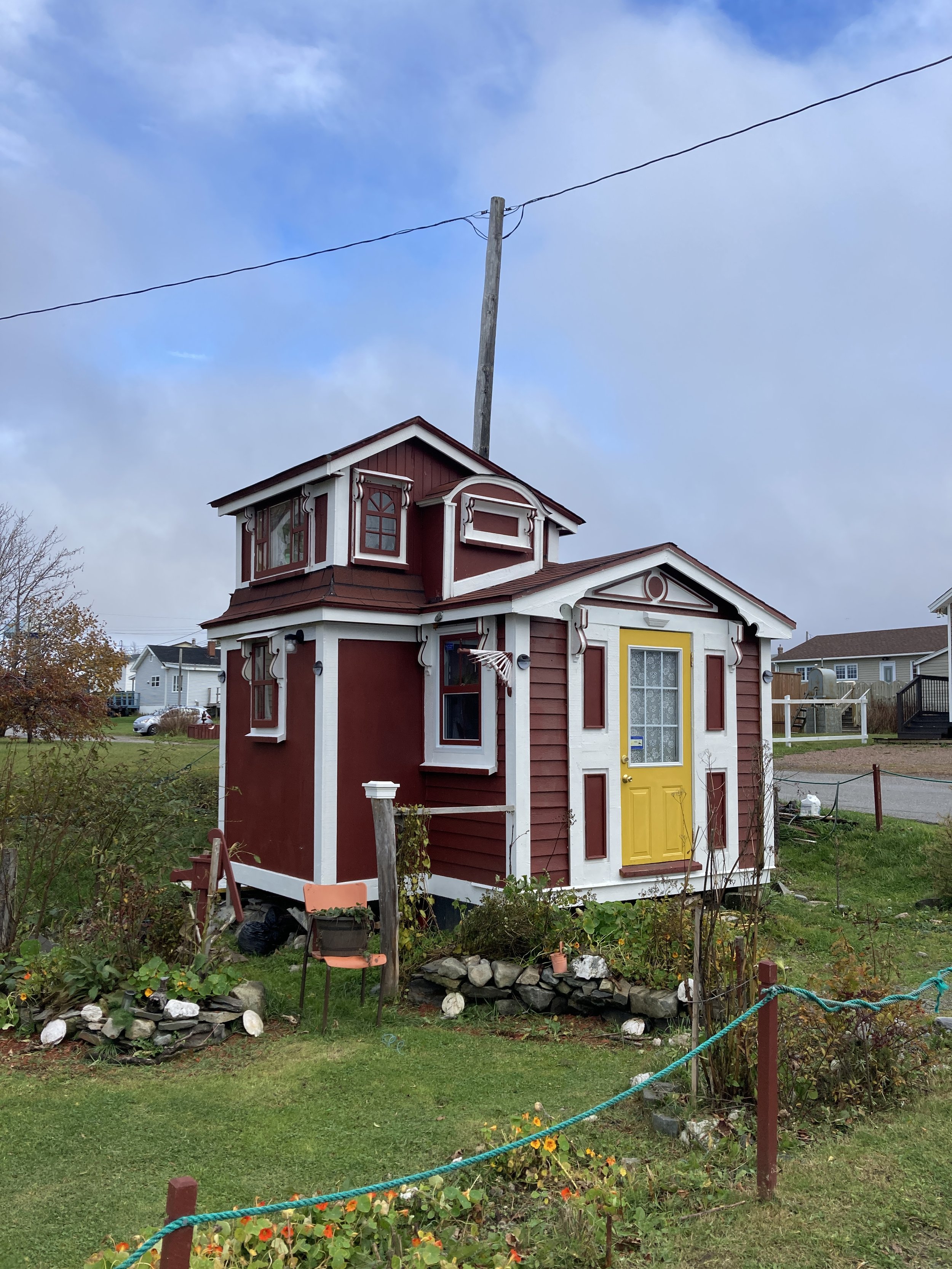
I not only loved the sound of Newfoundlanders, I loved their blunt, dry humor. “Ouw, a small eater are yeh?” Said our round, and elderly waitress when I passed on the mountain of french fries that came with the same meal the man next to me was engulfing. “You shud at least have some mashed tay-terhs.” She was so insistent in the way she said it that I ducked my head like an 8-year-old boy and agreed. A few minutes later she emerged with a heaping plate. "Here's your spuds!" She said with a wicked little smile. And then kept a weather eye on me to make sure I got a solid portion down my gullet.
I saw echoes of my mother’s Scottish heritage in some of that exchange. (Many Newfoundlanders made their way there from Scotland and Ireland.) Mom was usually more elegant, but the same firm delivery was evident. It taught me an appreciation for the power of speech. Not just the words themselves, but the ways you say them. I still believe that thoughtful communication will be the savior of us all.
Bonavistan Countryside
The next day we scouted the town on foot at first and later by car. From our B&B we wound through the empty roads and alleys, past small houses and the town’s largest church, bounded in front by an old cemetery that showed just how long the village had been around. Some homes were battered by the North Atlantic, and some looked as pristine and new as a Christmas doll house. Down the road we found a replica of the ship John Cabot had arrived in 500 years ago, but the museum, post tourist season, was closed.
We hiked the shoreline in search of whales and icebergs, but saw none. I was too late in the season.
(Photos by Cyndy Mosites and Chip Walter)
Walking the grassy cliffs above the coast, we watched the sea and sky change its mind again and again, angry and smiling by turns. The weather was warm and calm by Bonavista standards — steady, light and 50 degrees, but the waves hammered the shoreline, never giving the rocks below a break - an irresistible force pummeling the immovable objects of the land … except for one smiling face.
Wind is the Bonavistite’s constant companion. The town is one of Canada’s gustiest with an average wind speed of 20.3 mph (32.6 hm/h). And winters, though not as cold as some places inland, are bitter with heavy snow and wind chills that can reach -25 in January and February.
After hiking several miles, we headed back to town and found a little bar for lunch, where we suspect our friend Eric spent much of his day. While eating sandwiches and soup, two things that caught my eye: the word Thundercake on the menu wall (what sort of food could that possibly be?!), and a blueberry pie unlike anything I had ever seen before.
Blueberry pie - Bonavista-style (photo by Chip Walter)
Naturally, we had to partake. (Required journalistic research, you see.) While we ate, the woman at the counter explained thundercakes. They are, it turns out, a lot like funnel cakes (except with a much cooler name): pancake batter drizzled in hot oil and served up with sugar. Thankfully for our waistlines, the little kitchen wasn’t set up to make Thundercakes in the afternoon. We hung our heads and headed to the car for more exploring.
Eric insisted we visit a place called Devil’s Dungeon, or sometimes called Devil's Eye. He said the new Peter Pan movie that Disney was producing had been shot there (true - see the link), a place where the sea had won the battle with land and created a dungeon no one would want to enter. We had seen a painted sign along the road earlier that day with that name when we were hiking, but passed over it. Now, with Eric’s encouragement, we felt we had to go.
We bumped along a rutted dirt road that ran more or less along the sea for a mile or two and finally found it, a favorite hang out for kids and tourists if the little parking lot was any indication. It did indeed look like a devilish place.
The Devil’s Dungeon. The Ideal place for a climactic encounters with Captain Hook! (Photo by Chip Walter)
As arresting as that image was, I was more intrigued by what lay beyond the dungeon. The sun was now low. The sky looked stern and the sea was whipping. Bad weather ahead, Eric had said. But the view of it all at that moment absolutely mesmerized me. I felt drawn and stood for a long time alone above the cliffs, trying somehow to catch the feel of it with my piddling iPhone.
For perspective, that’s me walking beyond the dungeon. (Photo by Cyndy Mosites)
This was the best I could do. It pales next to the experience itself.
Bonavista’s sea and sky, and an evil wind coming. (Photo by Chip Walter)
When I turned back, I saw a solitary house on the forbidding bluff and realized why its owner was willing to build a house in such a place. That view is one I will never forget.
The sun was setting as we headed back so we made our way to PKs for dinner (where else?), and struck up a conversation with an elderly woman and her son. Diane was the woman’s name. She was filled with energy and humor with great mounds of fluffy white hair. She said she had moved to Bonavista when her husband had died 18 years earlier. She saw the little town once and immediately bought a house.
“That’s the way I do things,” she said, turning her palms up and out. “I’m a risk taker.”
Her son didn't disagree. “Newfoundland is the windiest place in Canada, and Bonavista is the windiest place in Newfoundland, and my mother picked the windiest place in Bonavista.”
It was the best place she ever lived, she said. She would wake up in the fall and find blue and gray and humpback whales rollicking in the sea for days. She got up one morning she said to find an iceberg, thirty feet high bobbing just outside her window. Some winds, when Nor’easters came in, clocked at 100 miles per hour. But her son had helped her expand and reinforce the house and it never lost a shingle.
Now, though, she had to move outside to Toronto. At 79 she needed better access to doctors and hospitals. They were scarce in her neck of the woods. So she was off; the next day in fact, after one more meal at PKs. Cyn and I loved Diane’s grit and infectious laugh and love of life. She asked to join our Vagabond Journey, and we said we'd happily add her to the list of Dispatches. We wished her a safe journey and an enjoyable next chapter, and off she went with her son.
The next morning we awoke to a roaring wind. You could feel it in the timbers of our room. Gusts were clocking in at 60 miles per hour. When I opened the storm door to load our bags, we nearly lost the storm door.
Here’s a brief video illustrating just how windy it was as I walked out the door of our B&B. (Video by Chip Walter)
The mighty North Sea at work. (Video by Chip Walter)
As we headed out of town, we stopped to grab hot coffees at the Tim Horton’s. “Crazy day, “ I said to the waitress as I watched the sideways rain outside. She smiled and nodded. “Is this unusual?” I asked.
“No,” she said, with a sly smile. “This is normal.”
Maybe it’s because we sit at one of the four corners of the world, I thought, as I got in the car. That would explain a lot. We drove on, heading south for the first time in five weeks. After a ferry and several hundred more miles, we would eventually turn toward Chicago and the American West, in search of new adventures.
In the meantime, here’s a little toe-tapping music too enjoy while you’re on the road with us. https://www.youtube.com/watch?v=458H57oegqg
This is a series about Cyndy and Chip’s Vagabond Adventure - our journey to explore all seven continents, all seven seas and 100+ countries by land and sea, never traveling by jet. COVID has forced us to begin our journey in North America, not a bad start, but when the virus allows, we'll be heading overseas. What will the world be like following a global pandemic? What people will we meet? What cultures, places, languages and music will broaden us? Are we being pulled apart or are we coming together? We’ll find out.











